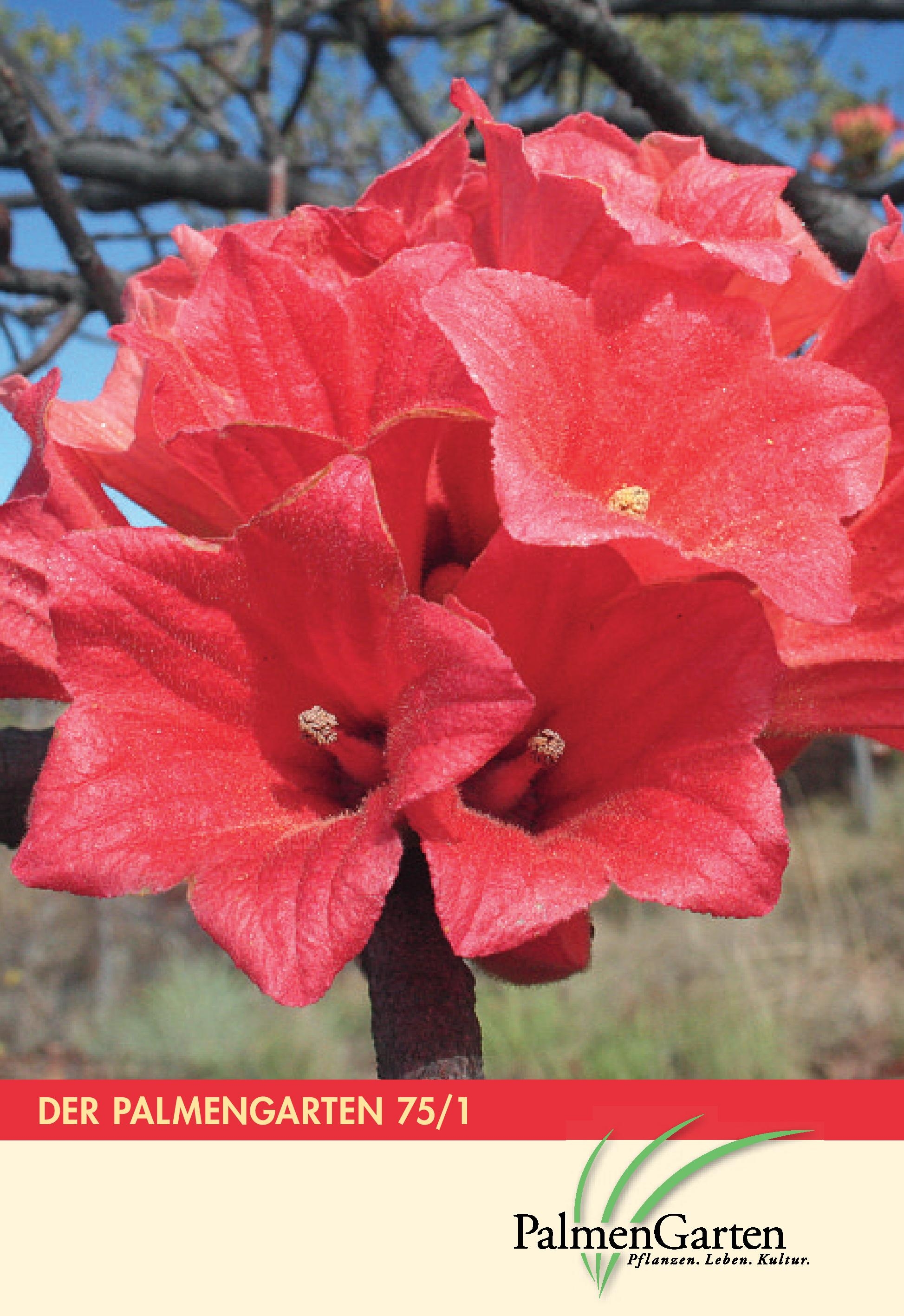Malvengewächse der Nebelwüsten Chiles und Perus
DOI:
https://doi.org/10.21248/palmengarten.105Abstract
Die Nebeloasen der chilenisch-peruanischen Küstenwüste sind ein einzigartiges Ökosystem, in dem die Pflanzen nahezu ausschließlich von der im Nebel enthaltenen Feuchtigkeit versorgt werden. Eine der artenreichsten und bestandsprägenden Pflanzenfamilien in diesemÖkosystem sind die Malvaceen, die in vielerlei Hinsicht an die dort herrschenden Umweltbedingungen angepasst sind und etliche attraktive Arten stellen. Ausgewählte Vertreter dieser Familie werden hier vorgestellt.
Literaturhinweise
Bayer, C., Cole, T. C. H. & Hilger, H. H. 2010: System der Blütenpflanzen – neue Zugehörigkeiten, neue Namen. – Palmengarten 74: 110–117. https://doi.org/10.21248/palmengarten.406
Chanco, M., León, B. & Sanchez, I. 2006: Malvaceae endemicas del Peru. – Rev. Peru. Biol. 13: 413s–425s. https://doi.org/10.15381/rpb.v13i2.1877
Dillon, M. O. 1997a: Lomas formations (Peru), CPD site SA42. In: Davis, S. D., Heywood, V. H., Herrera-MacBryde, O., Villa-Lobos, J. & Hamilton, A. (Hrsg.), Centres of plant diversity: a guide and strategy for their conservation. Volume 3: The Americas. – Cambridge.
Dillon, M. O. 1997b: Lomas formations of the Atacama desert (northern Chile), CPD site SA43. In: Davis, S. D., Heywood, V. H., Herrera-MacBryde, O., Villa-Lobos, J. & Hamilton, A. (Hrsg.), Centres of plant diversity: a guide and strategy for their conservation. Volume 3: The Americas. – Cambridge.
Dillon, M. O. 2011: Flora of the lomas formations. http://emuweb.fieldmuseum.org/botany/search_lomas.php.
Dunai, T. J., Gonzalez Lopez, G. A. & Juez-Larré, J. 2005: Oligocene–Miocene age of aridity in the Atacama Desert revealed by exposure dating of erosion-sensitive landforms. – Geology 33: 321–324. https://doi.org/10.1130/g21184.1
Fryxell, P. A. 1997: The American genera of Malvaceae – II. – Brittonia 49: 204–269. https://doi.org/10.2307/2807683
Fuertes Aguilar, J. A., Fryxell, P. A. & Jansen, R. K. 2003: Phylogenetic relationships and classification of the Sida generic alliance (Malvaceae) based on nrDNA ITS evidence. – Syst. Bot. 28: 352–364.
Hartley, A. J., Chong, G., Houston, J. & Mather, A. E. 2005: 150 million years of climatic stability: evidence from the Atacama Desert, northern Chile. – J. Geol. Soc. 162: 421–424. https://doi.org/10.1144/0016-764904-071
Huertas, M. L. 2010: Systematics and evolution of Palaua (Malvaceae). – Dissertation, Goethe-Universität, Frankfurt am Main.
Huertas, M. L., Schneider, J. V. & Zizka, G. 2007: Phylogenetic analysis of Palaua (Malveae, Malvaceae) based on plastid and nuclear sequences. – Syst. Bot. 32: 157–165. https://doi.org/10.1600/036364407780360157
Krapovickas, A. 1996: Sinopsis del genero Gaya (Malvaceae). – Bonplandia 9: 57–87.
Muñoz-Schick, M. 1995: Revisión del genero Cristaria (Malvaceae) en Chile. – Bol. Mus. Nac. Hist. Nat. 45: 45–110.
Schneider, J. V., Schulte, K., Fuertes Aguilar, J. & Huertas, M. L. 2011: Molecular evidence for hybridization and introgression in the neotropical coastal desertendemic Palaua (Malveae, Malvaceae). – Mol. Phylogenet. Evol. 60: 373-384. https://doi.org/10.1016/j.ympev.2011.05.010
Tate, J. A. & Simpson, B. B. 2003: Paraphyly of Tarasa (Malvaceae) and diverse origins of the polyploid species. – Syst. Bot. 28: 723–737.
Tate, J. A., Fuertes Aguilar, J., Wagstaff, S. J., La Duke, J. C., Slotta, T. A. B. & Simpson, B. B. 2005: Phylogenetic relationships within the tribe Malveae (Malvaceae, subfamily Malvoideae) as inferred from ITS sequence data. – Amer. J. Bot. 92: 584–602. https://doi.org/10.3732/ajb.92.4.584
Telewski, F. W. & Zeevaart, J. A. D. 2002: The 120-yr period for Dr. Beal’s seed viability experiment. – Amer. J. Bot. 89: 1285–1288. https://doi.org/10.3732/ajb.89.8.1285




